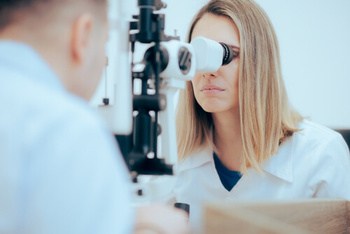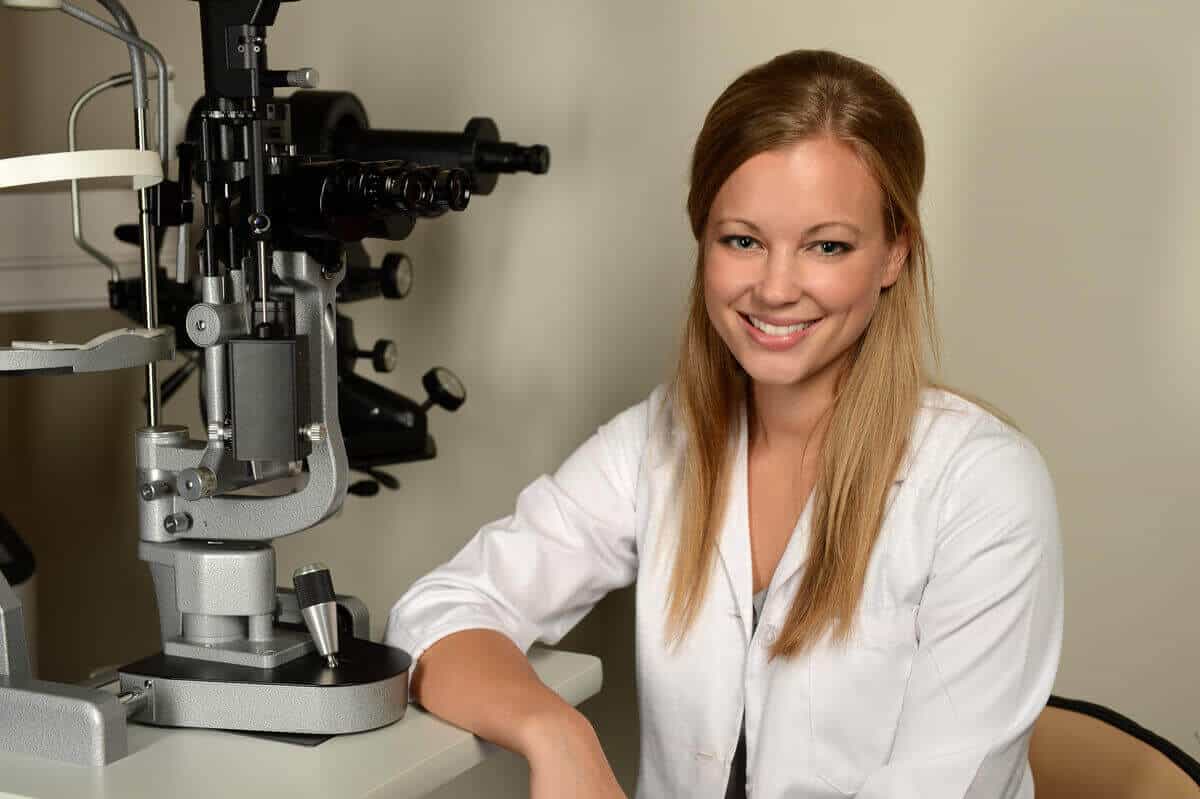The Essential Guide to Eye Test for Glaucoma: Understanding, Diagnosis, and Management
Glaucoma, known as the “silent thief of sight,” encompasses a range of eye conditions leading to irreversible vision loss by damaging the optic nerve. Typically triggered by elevated intraocular pressure, this condition affects roughly 300,000 Australians, with a considerable number remaining undiagnosed. Early identification and treatment play a vital role in managing this ocular ailment. This comprehensive guide illuminates the significance of regular glaucoma screenings, elucidates the examination process, and underscores how these tests aid in the early detection and prevention of sight deterioration.
What is Glaucoma?
Glaucoma is an ocular disorder that results in optic nerve damage, compromising visual acuity. Typically, this damage is attributed to an abnormal elevation of pressure within the eye, known as intraocular pressure.
Types of Glaucoma
 Open-Angle Glaucoma: The most common form, where the eye’s drainage system looks normal but does not effectively drain the fluid.
Open-Angle Glaucoma: The most common form, where the eye’s drainage system looks normal but does not effectively drain the fluid.- Angle-Closure Glaucoma: This occurs when the eye’s drainage system becomes blocked or covered, often quickly raising eye pressure.
- Normal-Tension Glaucoma: Optic nerve damage occurs even though eye pressure is within the normal range.
Why Regular Eye Tests for Glaucoma are Crucial
Early Detection
Regular eye exams are critical for early detection of glaucoma. Early stages of glaucoma typically have no symptoms, and vision loss is gradual and unnoticed until the disease is at an advanced stage.
Prevention of Vision Loss
Although glaucoma has the potential to cause permanent vision loss, timely detection and treatment significantly reduce the risk. This is especially true when the disease is identified in its initial phases, as it enables the prevention or deceleration of vision impairment.
Eye Pressure and Its Significance
Eye pressure, known medically as intraocular pressure (IOP), is a critical factor in glaucoma. The normal range of eye pressure typically falls between 12 and 22 mm Hg. Anything exceeding this range is regarded as a risk factor for developing glaucoma.
Optic Nerve Assessment
The optic nerve transmits visual information from the eye to the brain. In glaucoma, the optic nerve is gradually damaged, often starting with the loss of peripheral (side) vision.
Eye Test for Glaucoma: A Critical Component in Eye Care
Regular eye tests for glaucoma are essential for early detection and management of the disease. These tests are designed to identify signs of glaucoma before significant vision loss occurs. Understanding these tests can help individuals be proactive about their eye health.
Types of Glaucoma Tests
- Tonometry (Eye Pressure Test): Measures the intraocular pressure (IOP) of the eye.
- Ophthalmoscopy (Optic Nerve Assessment): The eye doctor can use this technique to carefully examine the shape and colour of the optic nerve. Any alterations in the optic nerve’s appearance might point towards potential damage caused by glaucoma.
- Perimetry (Visual Field Test): This test maps the visual field, including peripheral vision, to identify any areas of vision loss.
- Gonioscopy (Angle Test): Examines the angle in the eye where the iris meets the cornea, which is crucial for assessing angle-closure glaucoma.
- Optical Coherence Tomography (OCT): Provides detailed cross-sectional images of the retina, helping in detecting changes to the optic nerve and retinal nerve fibres.
Frequency of Eye Tests for Glaucoma
The frequency of eye tests for glaucoma depends on several factors:
- Age: As the risk of glaucoma increases with age, older adults should have more frequent screenings.
- Risk Factors: Regular screenings are recommended for individuals with risk factors, including a family history of glaucoma, African or Hispanic heritage, or some existing eye conditions.
- Previous Test Results: Those with previous abnormal test results may need more frequent monitoring.
Preparing for a Glaucoma Test
- Medical History: Be prepared to provide your eye doctor with a full medical history, including any current medications, past eye conditions, and family history of glaucoma.
- Current Vision Issues: Inform the doctor about any current vision problems or changes.
- Eye Drops: Some glaucoma tests require dilating the pupils with eye drops. These drops can affect vision temporarily, so arranging for someone to drive after the appointment is advisable.
What to Expect During the Test
- Non-invasive Procedures: Most glaucoma tests are painless and non-invasive.
- Pupil Dilation: For some tests, eye drops are used to dilate the pupils. This can cause light sensitivity and blurry vision for a few hours.
- Duration: The entire set of glaucoma tests usually takes less than an hour.
Risk Factors for Glaucoma: A Closer Look
Gaining insight into the risk factors associated with glaucoma is crucial for timely detection and efficient management of this condition. Here are some of the key risk factors:
Age
- Older Adults: Individuals aged 60 and above face a considerably elevated risk of glaucoma development, highlighting the importance of proactive monitoring and care. The risk increases further after the age of 70.
Genetic Factors
- Family History: A family history of glaucoma increases the likelihood of developing the condition. If a close family member has glaucoma, your risk is four to nine times higher.
Ethnicity
- Ethnic Background: Certain ethnic groups are at a higher risk. People of African, Asian, and Hispanic descent have a higher propensity for developing certain types of glaucoma.
Medical History
- Other Eye Conditions: Conditions like high myopia (near-sightedness), thin corneas, and past eye injuries or surgeries can increase the risk of glaucoma.
- Systemic Health Conditions: Diabetes, high blood pressure, and heart diseases have been linked to an increased risk of developing glaucoma.
- Medications: Prolonged use of corticosteroid medications, particularly in eye-drop form, can increase the risk of developing secondary glaucoma.
Lifestyle Factors
- Physical Inactivity: A sedentary lifestyle may increase the risk of glaucoma, whereas regular, moderate exercise may reduce it.
- Smoking: Smoking is a potential risk factor for glaucoma, adding to its risk profile alongside other health concerns.
Glaucoma Management and Treatment: Strategies for Preserving Vision
Effective management and treatment of glaucoma are vital in preventing or slowing down vision loss. Here’s an overview of the current strategies:
Medications
- Eye Drops: The most common initial treatment for glaucoma. These drops can lower intraocular pressure by either reducing the amount of fluid the eye produces or improving its outflow. Regular use as prescribed is crucial for their effectiveness.
- Oral Medications: In some cases, oral drugs may be prescribed if eye drops are not sufficient in controlling eye pressure.
Surgical and Laser Treatments
When medications are not effective or not suitable, surgical options may be considered:
- Laser Trabeculoplasty: Used for open-angle glaucoma, this procedure improves the flow of fluid out of the eye, thereby reducing pressure.
- Laser Iridotomy: Designed specifically for the treatment of angle-closure glaucoma, this technique involves creating a small aperture in the iris, which facilitates a smoother flow of fluid.
- Trabeculectomy: In this surgical procedure, a small piece of tissue is removed from the eye, creating a new channel for fluid drainage.
- Drainage Implants: Small devices that are implanted in the eye to improve fluid drainage.
Monitoring and Ongoing Care
Regular monitoring is critical in managing glaucoma:
- Routine Eye Exams: Ongoing assessments are necessary to monitor intraocular pressure, optic nerve health, and visual fields.
- Adjusting Treatment Plans: As glaucoma can progress over time, treatment plans may need to be adjusted. This could mean changing medications or dosage or even considering surgery.
Lifestyle and Home Remedies
While medical treatment is the cornerstone of glaucoma management, lifestyle choices can also play a supportive role:
- Regular Exercise: Moderate, regular exercise like walking or jogging can help lower intraocular pressure.
- Healthy Diet: Consuming a well-balanced diet, abundant in essential nutrients, holds the potential to foster and maintain optimal eye health.
- Protecting the Eyes: Use protective eyewear during sports or when using power tools to prevent eye injuries that could exacerbate glaucoma.
Living with Glaucoma: Adjusting to a New Reality
Managing glaucoma entails adapting to a chronic condition that demands continual attention and care. It is a journey that necessitates unwavering commitment and diligent nurturing. Here are some strategies and considerations for those navigating life with glaucoma:
Coping with the Emotional Impact
- Acceptance: Understanding and accepting the diagnosis of glaucoma can be challenging. It’s important to acknowledge these feelings and seek support when needed.
- Support Networks: Connecting with others who have glaucoma can provide emotional support and practical advice. Support groups, whether held in-person or online, can offer immeasurable value and support to individuals in need.
- Professional Counseling: Sometimes, talking to a mental health professional can help in coping with the emotional aspects of living with a chronic condition like glaucoma.
Lifestyle Adaptations

Vision Aids: Utilise vision aids like magnifying glasses, brighter lighting, and high-contrast colours to make daily tasks easier.
- Home Safety: Modify your living space to reduce the risk of accidents. This can include removing tripping hazards, using non-slip mats, and ensuring good lighting.
- Regular Exercise: Engage in regular, moderate exercise, but avoid activities that significantly increase blood pressure or eye pressure.
- Eye Protection: Always wear protective eyewear during activities that could pose a risk to your eyes.
Medication Management
- Adherence to Treatment: Consistently following the prescribed treatment plan is crucial in managing glaucoma. This includes regular use of eye drops or taking oral medications as directed.
- Understanding Medications: Be aware of the purpose and possible side effects of your medications. Discuss any concerns with your eye doctor.
Conclusion
Glaucoma is a grave ocular condition that, if left undetected and untreated, can result in irreversible vision loss. Regular eye tests for glaucoma are the best defence against this silent thief of sight. By understanding the importance of these tests, knowing what to expect during an exam, and being aware of the treatment options available, you can take proactive steps to protect your vision.
Remember, early detection is key to managing glaucoma effectively. If you’re over 40, have a family history of glaucoma, or have other risk factors, schedule an eye exam with us today by calling (03) 9070 3580. It could save your sight.
Note: Any surgical or invasive procedure carries risks. Before proceeding, you should seek a second opinion from an appropriately qualified health practitioner.
References
- https://www.mayoclinic.org/diseases-conditions/glaucoma/symptoms-causes/syc-20372839
- https://www.aao.org/eye-health/diseases/what-is-glaucoma


 Open-Angle Glaucoma: The most common form, where the eye’s drainage system looks normal but does not effectively drain the fluid.
Open-Angle Glaucoma: The most common form, where the eye’s drainage system looks normal but does not effectively drain the fluid.




Leave a Reply
Want to join the discussion?Feel free to contribute!